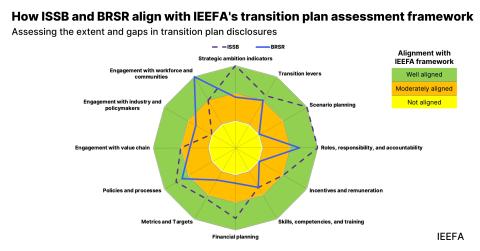IEEFA report: Vast potential in India for solar-powered irrigation
Aug. 16, 2018 (IEEFA) — A research brief published today by the Institute for Energy Economics and Financial Analysis (IEEFA) describes how a switch from conventional irrigation-pump systems to solar-powered ones in India would save enormous sums of money and generate income for farmers nationwide.
The brief—“India: Vast Potential in Solar-Powered Irrigation”—notes that while the idea of replacing some 30 million grid-attached or diesel pumps with solar pumps is gaining traction, the pace of deployment has been slow.
However, it adds that recent solar-irrigation initiatives by way of the central government’s Kisan Urja Suraksha Evam Utthaan Mahaabhiyan (KUSUM) scheme and the Gujarat state government’s Suryashakti Kisan Yojana (SKY) scheme are steps in the right direction.
“The government, to its credit, is encouraging farmers to install stand-alone, solar-powered, off-grid pumps to not only meet their irrigation needs but also to provide an extra income source from selling surplus power to distribution companies (DISCOMs),” wrote Vibhuti Garg, an IEEFA energy economist and author of the brief.
“Considering the declining trend in prices of solar modules combined with economies of scale, IEEFA sees the all-in cost of solar-powered irrigation as a strong argument for reducing reliance on the current expensive government-subsidized model,” Garg said. “The strategy also stands to give a strong push to the government’s ‘Make in India’ program by stimulating domestic solar-pump manufacturing.”
About 70% of India’s rural households still depend primarily on agriculture for their livelihood, and successful farming in India typically requires irrigation.
A robust national solar-irrigation program would substantially contribute to India reaching its goal of having 100 gigawatts of solar energy capacity by 2022.
Highlights from the brief:
- The government of India could achieve 38% of its renewable electricity-generation target just by shifting from conventional pumps to solar irrigation pumps.
- Replacement of conventional pumps with 3-HP solar pumps, assuming a 19% utilization rate, would not match current electricity consumption by agriculture consumers and would require either an additional 25 million, 3-HP solar pumps or replacing the existing fleet with 5.5-HP solar pumps.
- Deployment of 5.5-HP solar pumps would enable the government to achieve 70% of its overall renewable energy target.
- The upfront cost of solar pumps, the current heavily subsidized supply of electricity to the rural sector, poor after-installation maintenance support and lack of awareness of the benefits of solar have combined to prevent most Indian farmers from shifting from less efficient, unsustainable modes of irrigation.
- Solar-powered irrigation offers huge economic and environmental benefits alike, and the recent KUSUM initiative by the central government and the SKY scheme by the Gujarat state government suggest that attitudes are changing.
Garg said a significant up-scaling of solar-power irrigation would be broadly beneficial and specifically useful in providing distributed/end-of-grid generation, reducing the need for heavily subsidized electricity to the agricultural sector, and aligning solar generation with water irrigation time of use.
Full brief: “India: Vast Potential in Solar-Powered Irrigation”
Media contacts:
(India) Vibhuti Garg [email protected]
(Australia/Asia) (Australia) Tim Buckley, Australia [email protected] +61 40 810 2127 or Simon Nicholas, [email protected] +61 405 831 614
(U.S.) Karl Cates [email protected] 917 439 8225
About IEEFA:
The Institute for Energy Economics and Financial Analysis (IEEFA) conducts research and analyses on financial and economic issues related to energy and the environment. The Institute’s mission is to accelerate the transition to a diverse, sustainable and profitable energy economy.











